Binary CDMA RF Mesh Network
The technology that actually works
Technology
사이트 리뉴얼 중입니다.
곧 다시 찾아뵙겠습니다.
Binary CDMA Technology Essentials
Binary CDMA is a cutting-edge wireless communication technology optimized for interference-free, time-synchronized, fast data transmission. Its unique architecture enables robust performance in smart grids, IoT, and Advanced Metering Infrastructure.
Explore its key technical features, frame structure, and scalable network design that make it ideal for the next generation of connected systems.
Technical Highlights
| Frequency |
Unlicensed 917~923.5 MHz Channel Number: 13 Channel Bandwidth: 200 KHz Modulation: 2 Level FSK |
Customizable to meet client’s technical requirements No subscription fees |
| Multiplexing | Hybrid DMA | Combined advantages of CDMA, TDMA, and FDMA |
| Network Topology | Star, Tree, Mesh / 1:1, 1:N, N:M |
Supports Device-to-Device ARAH (Auto Routing & Auto Healing) |
| Network Control | Separate Container Structure ⇒ Payload not affected |
|
| Network Layer (Hops) |
Max 255 (Max hop) Number of Sub-Masters per Master: 3 |
|
| Number of Nodes | Max 240 (with 16KB MCU RAM) |
More nodes with bigger RAM, Easy to add additional Nodes (Plug & Play Concept) |
| Communication Stability |
Non-competing Synchronous Time Allocation Frequency hopping FEC (Forward Error Correction) 2nd Master Mode |
Efficient and stable network by avoiding channel interference and conflict Fast and reliable data transmission. |
| Speed | Data Rate: 96 kbps | Payload: 64 kbps guaranteed |
| Range (LoS) | 500 m |
LoS based on the 200 mWatt limit in Korea Higher power will lead to much longer LoS. |
| Latency | 100 ms |
|
| Connection Time | < 10 sec | |
| Network Setup Time | < 5 min (5-hop) | |
| Remote Console | Supported (Separate Time Slot ⇒ Payload not affected) | Easy maintenance |
Frame Structure
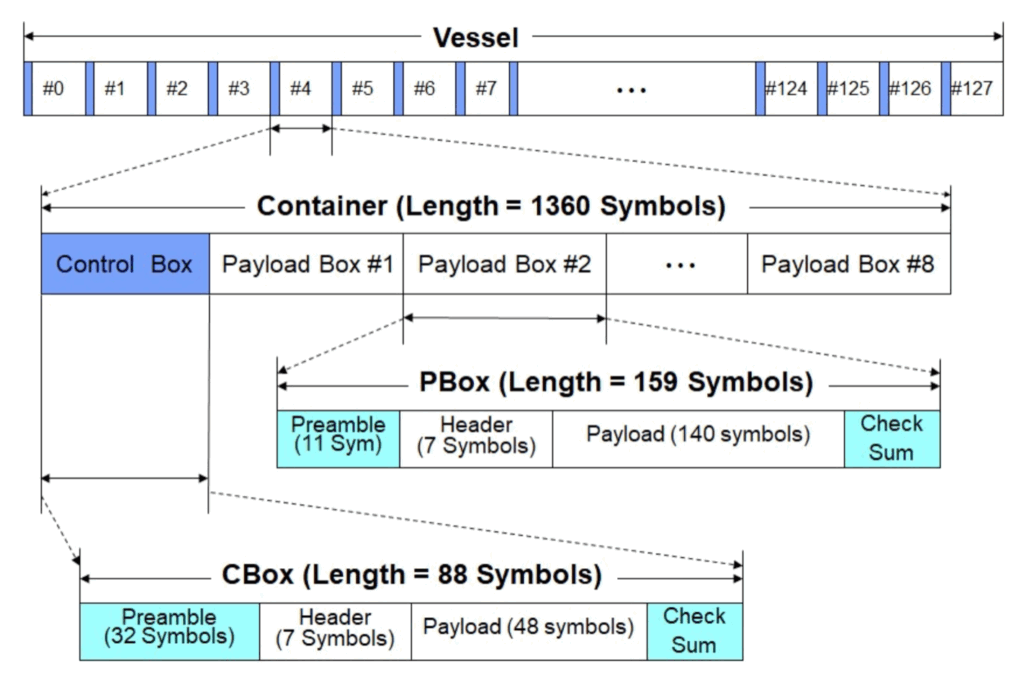
- The transmission frame consists of 128 containers.
- Each container is composed of one Control Box and eight Payload Boxes.
- The Control Box is used for synchronization and control information transmission, while the Payload Box is used for data transmission.
- Information is transmitted in units of symbols, each 16 bits in length.
- Depending on the processing gain, each symbol may carry either 8 bits or 5 bits of information.
Network Formation
- Adaptive Spanning Tree Network: Clone Master
- The Node relays the received registration request information to the higher-level Master.
- The Master allocates communication resources to the optimal Node.
- The Node that receives the resources becomes a Clone Master.
- The Sensor transmits information through the nearest (or designated) Node.
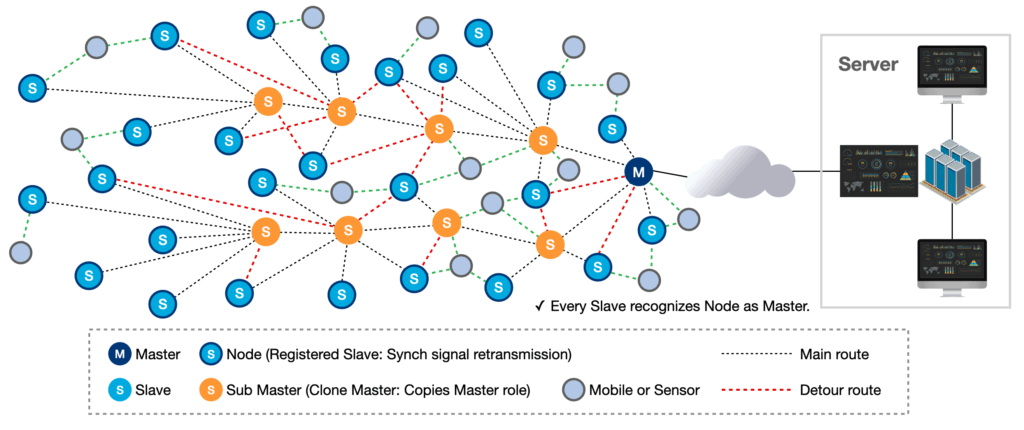
Glimpse at the Key Features
타사 "W" 무선통신 기술

비동기식 채널 경쟁 방식
A communication method based on competition, where an increase in the number of terminals leads to more collisions, resulting in reduced communication speed and connection drops.
이노비드 Binary CDMA 기술

동기식 채널 할당 방식
A method where devices are synchronized in advance and channels are allocated, minimizing interference and collisions between devices, thereby ensuring communication stability.
타사 "W" 무선통신 기술
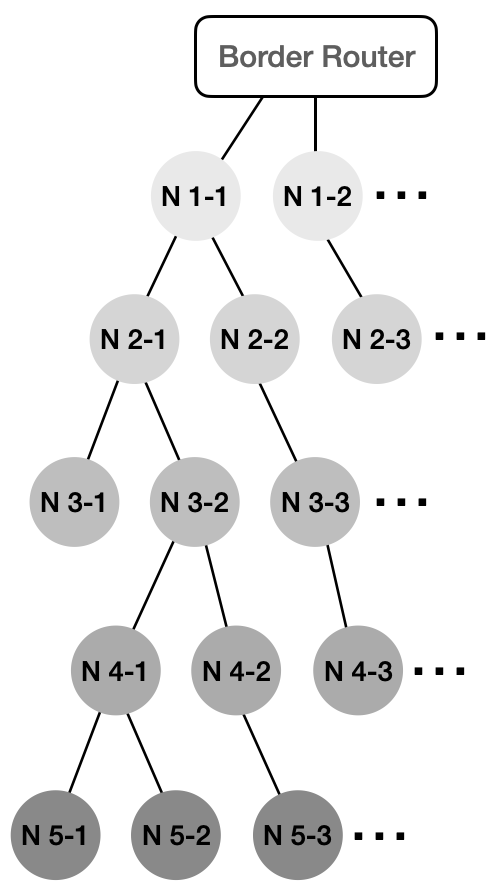
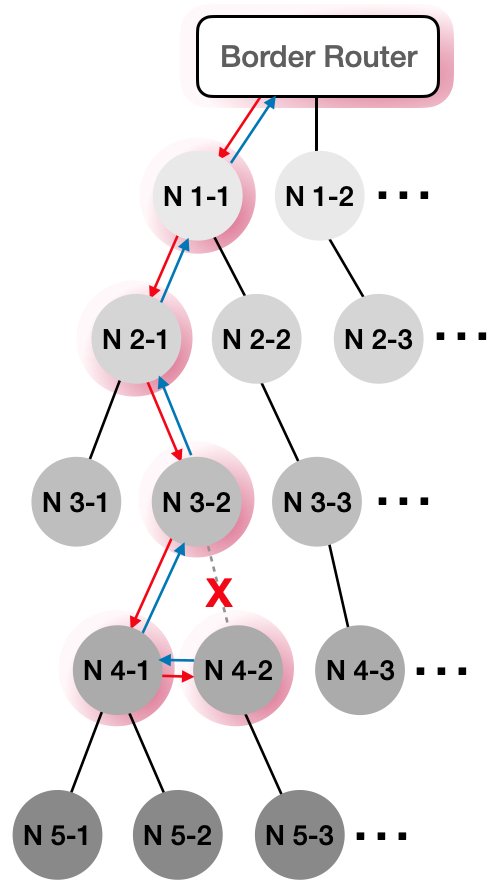
비저장 모드
- 네트워크 내 슬레이브 노드들의 라우팅 테이블 정보는 보더 라우터(마스터)에만 저장되어 있음.
- 슬레이브 노드 사이에 통신 장애가 발생해 리라우팅이 필요한 경우 새로운 경로 설정을 위한 노드의 동기신호와 등록신호는 보더 라우터를 거쳐야만 네트워크 복구가 가능함.
- 예를 들어, N 3-2와 N 4-2 사이에 통신장애 발생 시 N 4-2의 동기신호와 등록신호는 보더 라우터까지 통신해야 함으로써 네트워크 복구에 시간이 걸림.
이노비드 Binary CDMA 기술
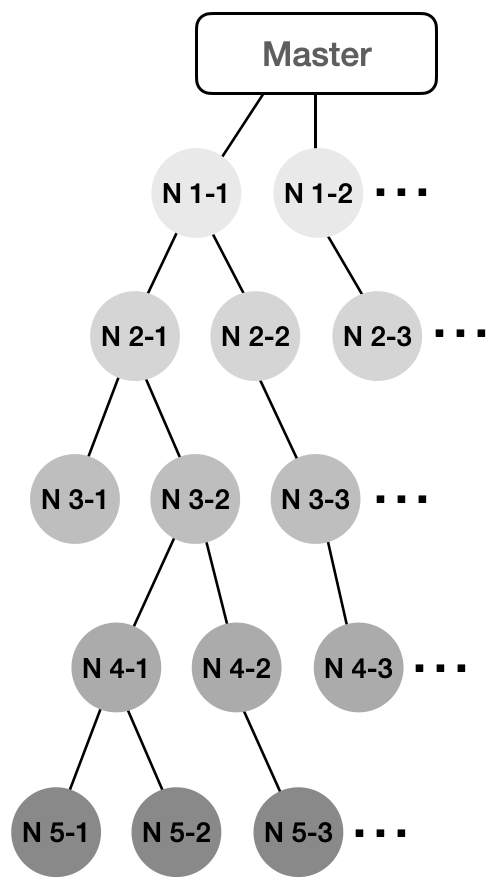
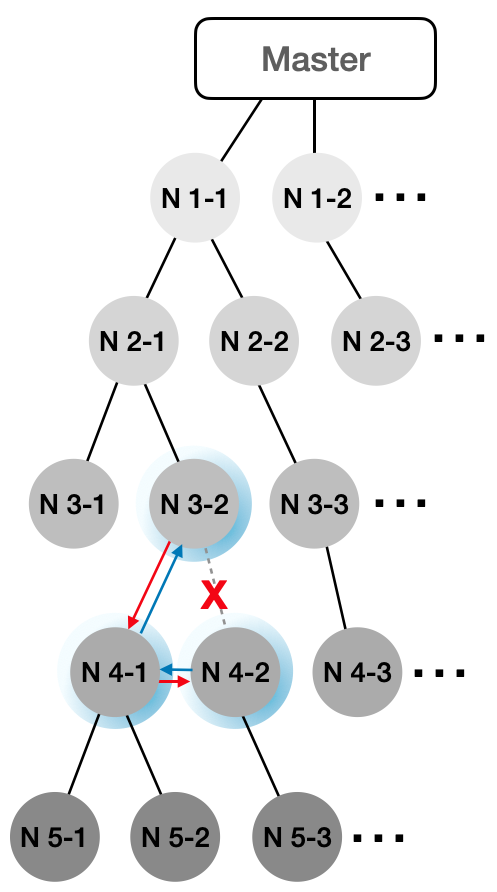
저장 모드
- 네트워크 내 모든 슬레이브 노드들의 라우팅 테이블 정보는 마스터 뿐만이 아닌 모든 노드에 저장되어 있음.
- 슬레이브 노드 사이에 통신 장애가 발생해 리라우팅이 필요한 경우 새로운 경로 설정을 위한 노드의 동기신호와 등록신호는 근처 가까운 슬레이브 노드를 통해 통신 가능함.
- 예를 들어, N 3-2와 N 4-2 사이에 통신장애 발생 시 N 4-2의 동기신호와 등록신호는 마스터가 아닌 주변 N 4-1을 통해 네트워크를 설정할 수 있어 훨씬 빠른 네트워크 복구가 가능함.
타사 "W" 무선통신 기술
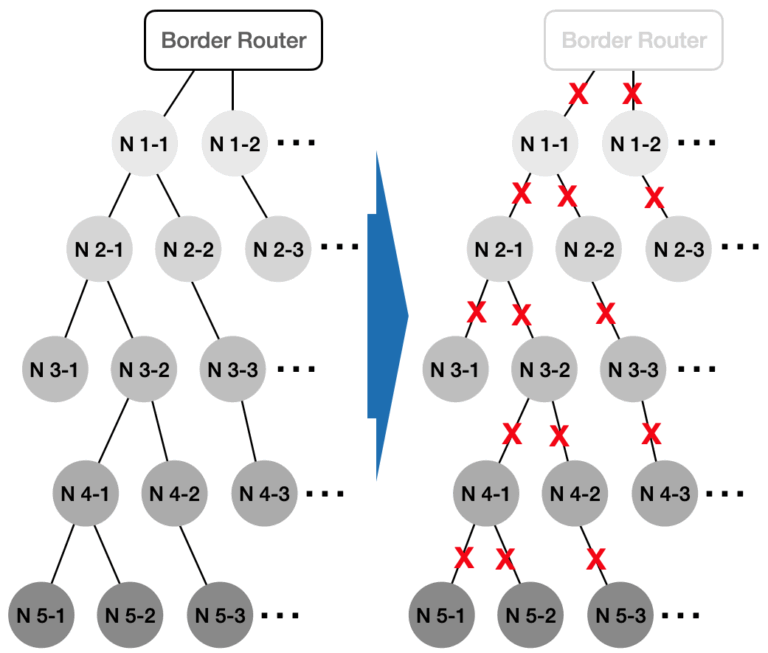
보더 라우터(마스터) 장애 발생 시
네트워크 안에 복수의 보더 라우터가 아닌 한개의 보더 라우터만 있는 경우 보더 라우터에 통신 장애가 발생하면 전체 네트워크에 걸쳐 통신 장애가 발생함.
이노비드 Binary CDMA 기술
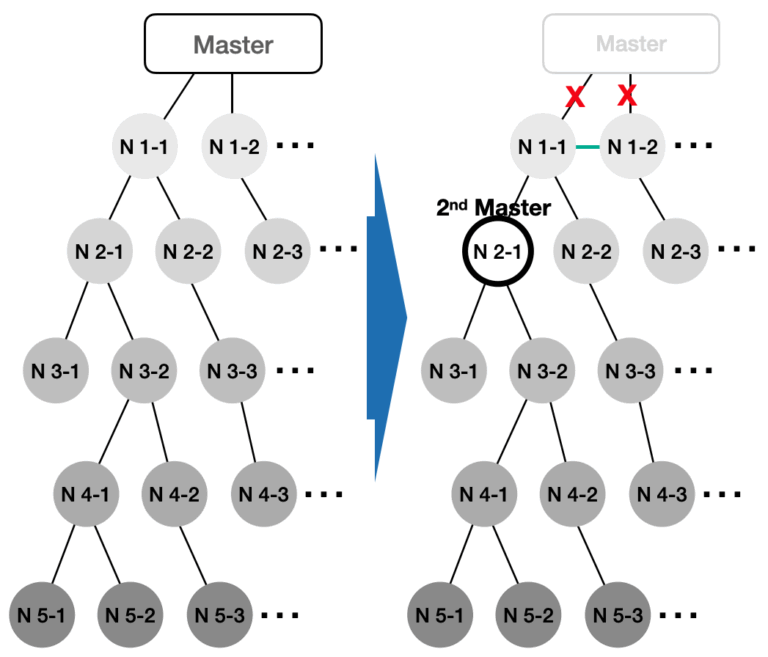
마스터 장애 발생 시
네트워크 안에 복수의 마스터가 없어도 슬레이브 노드 중 하나를 세컨드 마스터로 지정을 해놓으면 마스터에 통신 장애가 발생하는 경우 신속하게 자동으로 세컨드 마스터를 통해 통신을 복구하여 네트워크를 유지함.
